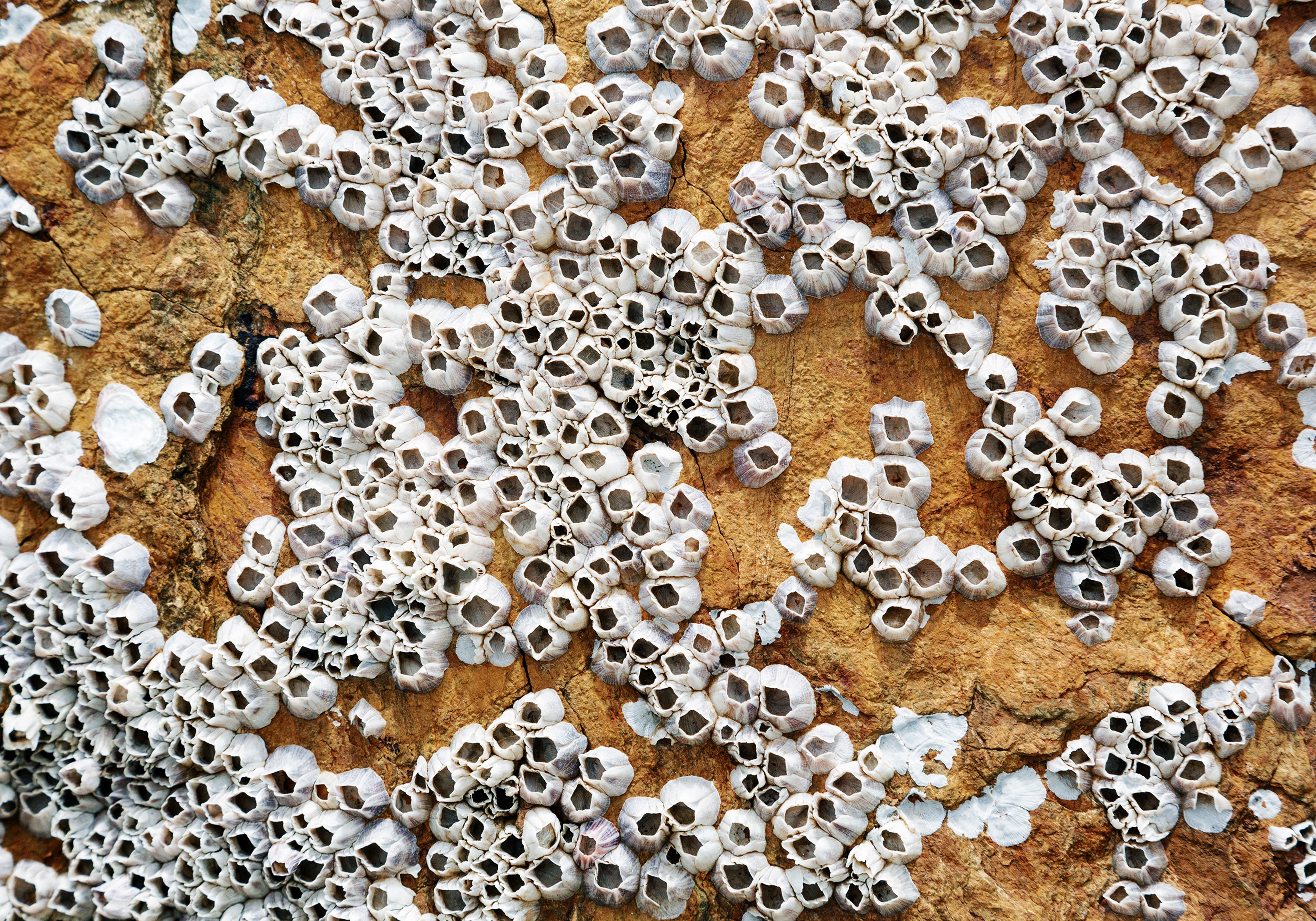Stop the bleeding
A biocompatible glue modeled on the substance that lets barnacles cling to rocks can seal bloody wounds in seconds.

Blood loss is a leading cause of death following a traumatic injury, especially in the military. Now MIT engineers have drawn inspiration from barnacles to design a glue that can seal wounds to stop bleeding in a hurry.
The biocompatible glue can adhere to surfaces even when they are covered with blood and forms a tight seal in seconds. This could be lifesaving in situations where stitching a wound is impractical, the researchers say, and it could also help control bleeding during surgery.
“We are solving an adhesion problem in a challenging environment, which is this wet, dynamic environment of human tissues,” says Xuanhe Zhao, a professor of mechanical engineering and civil and environmental engineering, whose lab has been working to address this problem for several years. In 2019, for example, his team developed a double-sided tape inspired by a substance spiders use to capture prey and showed that it could be used to close surgical incisions.
For their new glue, the researchers examined how barnacles cling to rocks, ship hulls, and even other animals—surfaces that are wet and often dirty, which makes adhesion difficult. The sticky protein molecules that do the job, they found, are suspended in an oil that repels water and contaminants, allowing the proteins to attach firmly.
To mimic this glue, they adapted an adhesive they had developed previously. They froze sheets of the material, ground it into microparticles, and suspended those particles in silicone oil.
When the resulting paste is applied to a wet surface such as blood-covered tissue, the oil repels the blood and other substances present, allowing the particles to cross-link and form a tight seal. With five to 15 seconds of gentle pressure, the glue sets and bleeding stops, the researchers demonstrated in rats.
One advantage of this material over the surgical tape is that it “can flow in and fit any irregular shape and seal it,” says postdoc Jingjing Wu, one of the lead authors of the study. “This gives freedom to the users to adapt it to irregular-shaped bleeding wounds of all kinds.”
Tests in pigs by researchers at the Mayo Clinic showed that the glue rapidly stopped bleeding in the liver, and it worked much faster and more effectively than commercially available blood-clotting agents. These studies showed that the seal remains intact for several weeks, giving the tissue time to heal, and causes little inflammation. The glue is assimilated by the body over months, and it can also be dissolved if needed.
The researchers now plan to test the glue on larger wounds, which they hope will demonstrate its usefulness for traumatic injuries.
Keep Reading
Most Popular
Large language models can do jaw-dropping things. But nobody knows exactly why.
And that's a problem. Figuring it out is one of the biggest scientific puzzles of our time and a crucial step towards controlling more powerful future models.
How scientists traced a mysterious covid case back to six toilets
When wastewater surveillance turns into a hunt for a single infected individual, the ethics get tricky.
The problem with plug-in hybrids? Their drivers.
Plug-in hybrids are often sold as a transition to EVs, but new data from Europe shows we’re still underestimating the emissions they produce.
Google DeepMind’s new generative model makes Super Mario–like games from scratch
Genie learns how to control games by watching hours and hours of video. It could help train next-gen robots too.
Stay connected
Get the latest updates from
MIT Technology Review
Discover special offers, top stories, upcoming events, and more.